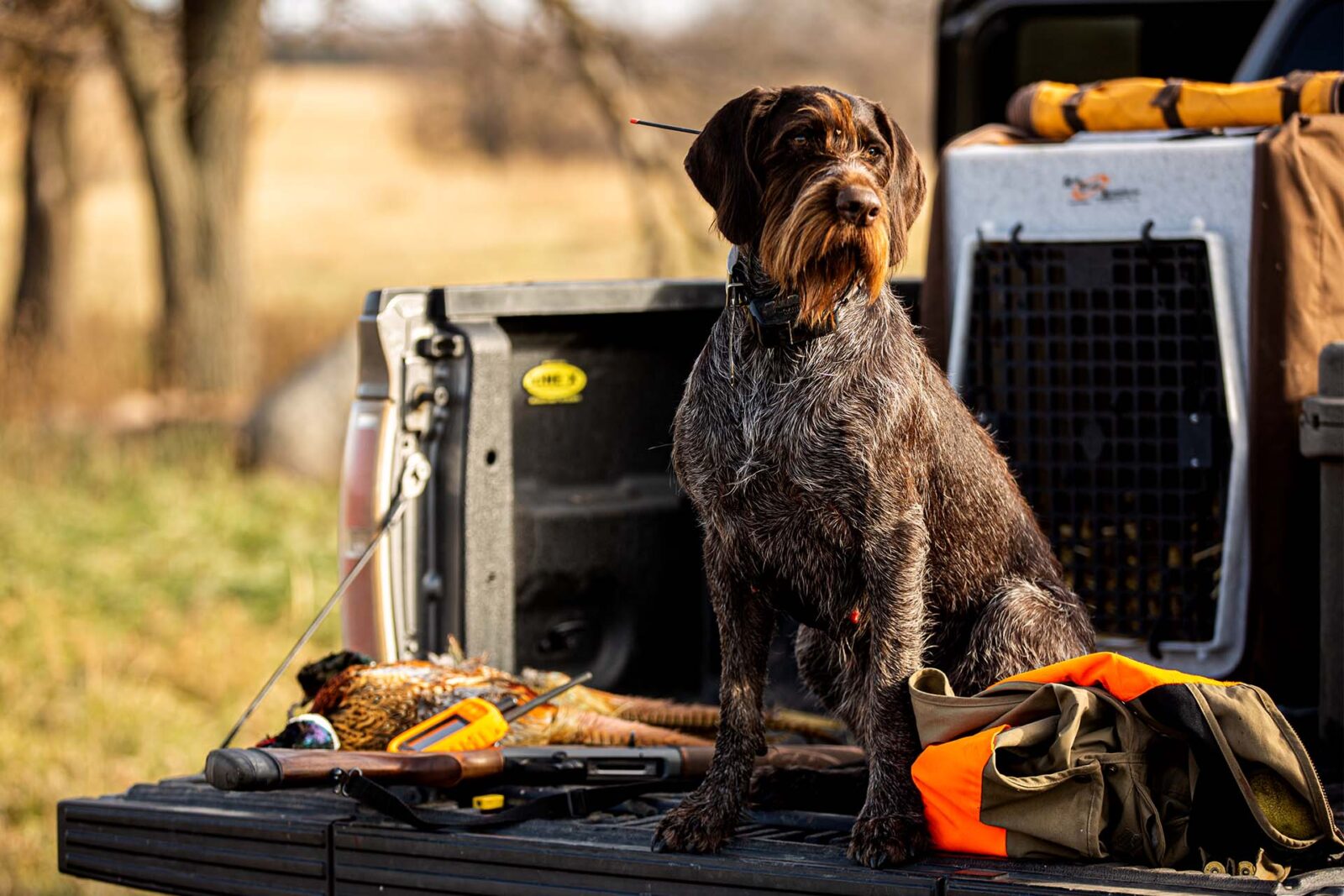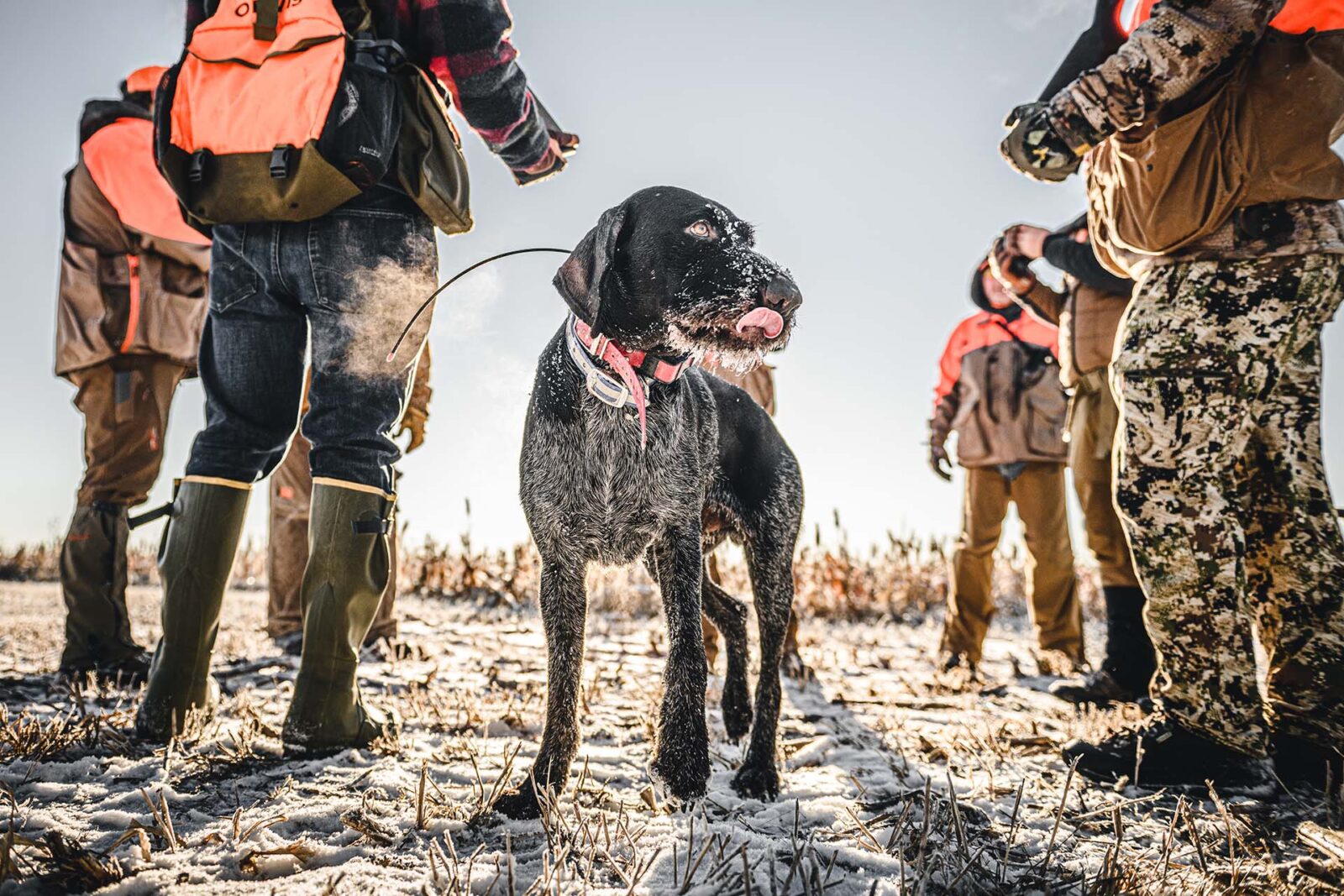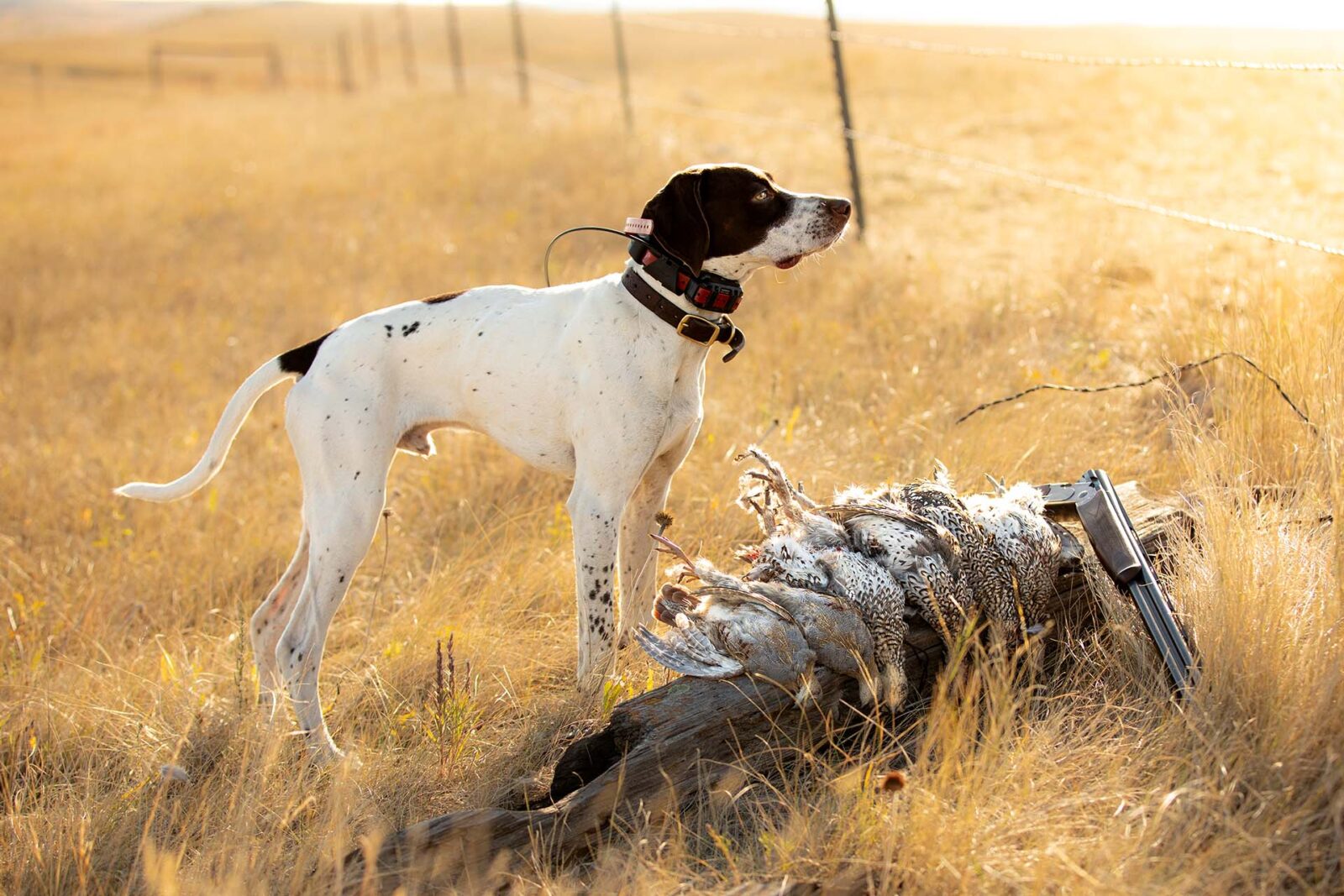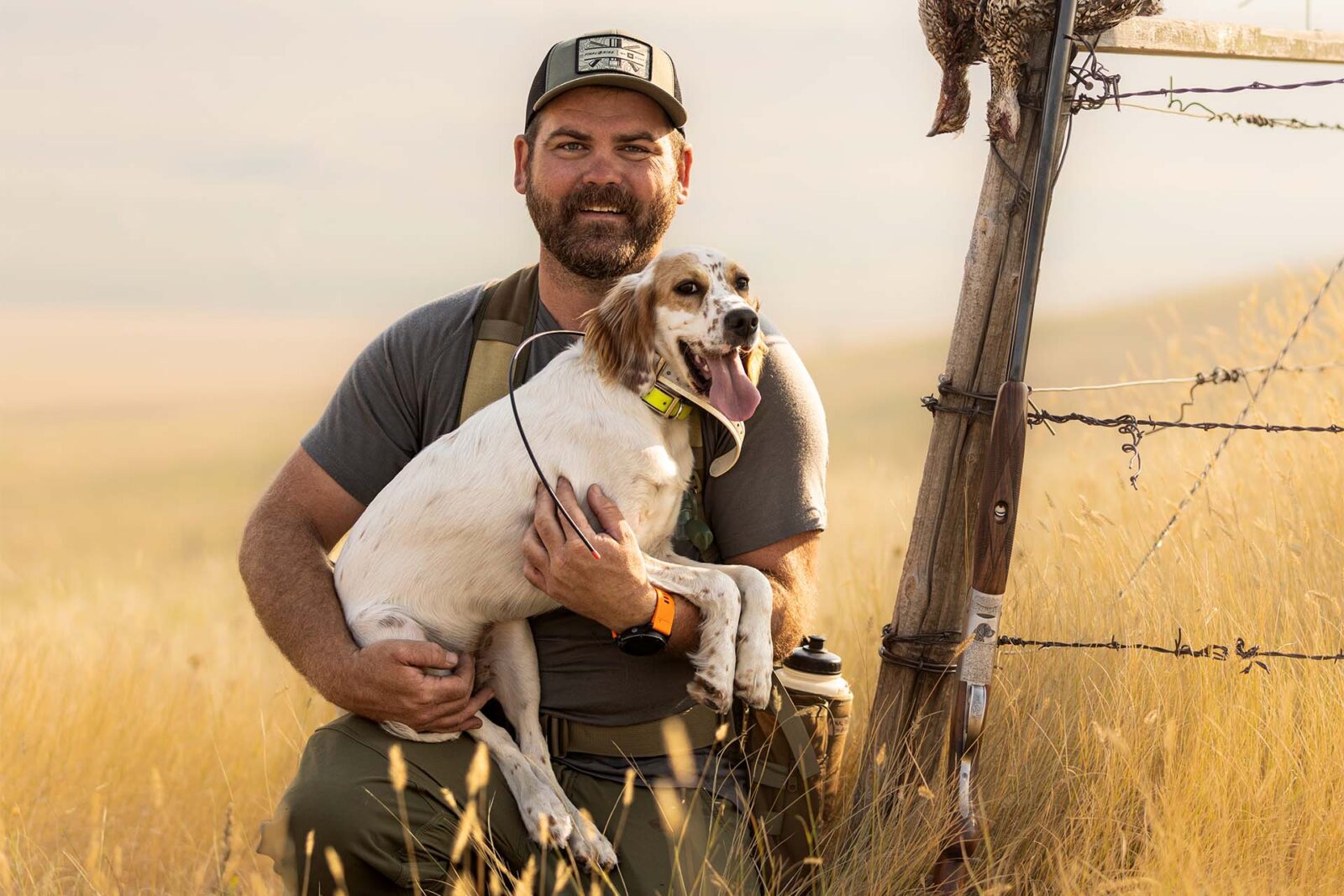“I always take it as a compliment when I tell people I have five dogs, and they think I’m crazy. Crazy people are the most interesting!”
For onX Hunt’s Wingshooting Manager Ben Brettingen, a household full of five dogs and one one-year-old daughter is just about right. After all, who has time to sit around and be bored? Whether he’s juggling five dogs at home or on the road heading out to an upland hunt somewhere far afield, Ben’s constantly seeking out new challenges and threading his way through the rapidly changing wingshooting landscape.
Starting Young
Ben grew up in Waconia, Minnesota, a small town with a rural western border, and a suburban eastern one. He recalls his family spending time visiting his uncle in Iowa, which had an incredible pheasant population at the time.
“My upbringing in the hunting space was more commonplace decades ago than it is today,” notes Brettingen. “I was completely consumed with hunting from the get-go. When I was too young to walk the fields, my mom would drop me off for the afternoon hunt, and my grandpa and dad would carry me on their shoulders. By the time I was four or five years old, I couldn’t even stand the thought of missing out on the morning of hunting. So, I did the only logical thing. When I thought my mom and dad were asleep, I scrounged up a couple of bungee cords, and snuck into my parents’ room. I then attempted to fasten my dad to the bed so he wouldn’t be able to leave without me.
The Brettingen family brought home their first bird dog, Jack, when Ben was six. He recalls that despite Jack being a “complete menace to society,” he was a force to be reckoned with when it came to bird dogging. When the pair couldn’t be out hunting, Ben would ride his down to where the path dead-ended into a beautiful hillside of native grass. There, he would find and point pheasants, “shooting” them with a gun fashioned out of conduit and an old Soviet-era rifle stock.
“Now that I think of it, that was a super cool gun,” he reflects. “Depending on how the mood struck, I could stack the barrels vertically for an over/under, or remove the tape and go horizontal for a side by side.”
It was, in his words, a “pretty awesome” childhood, and served as the core foundation for a life lived outdoors.
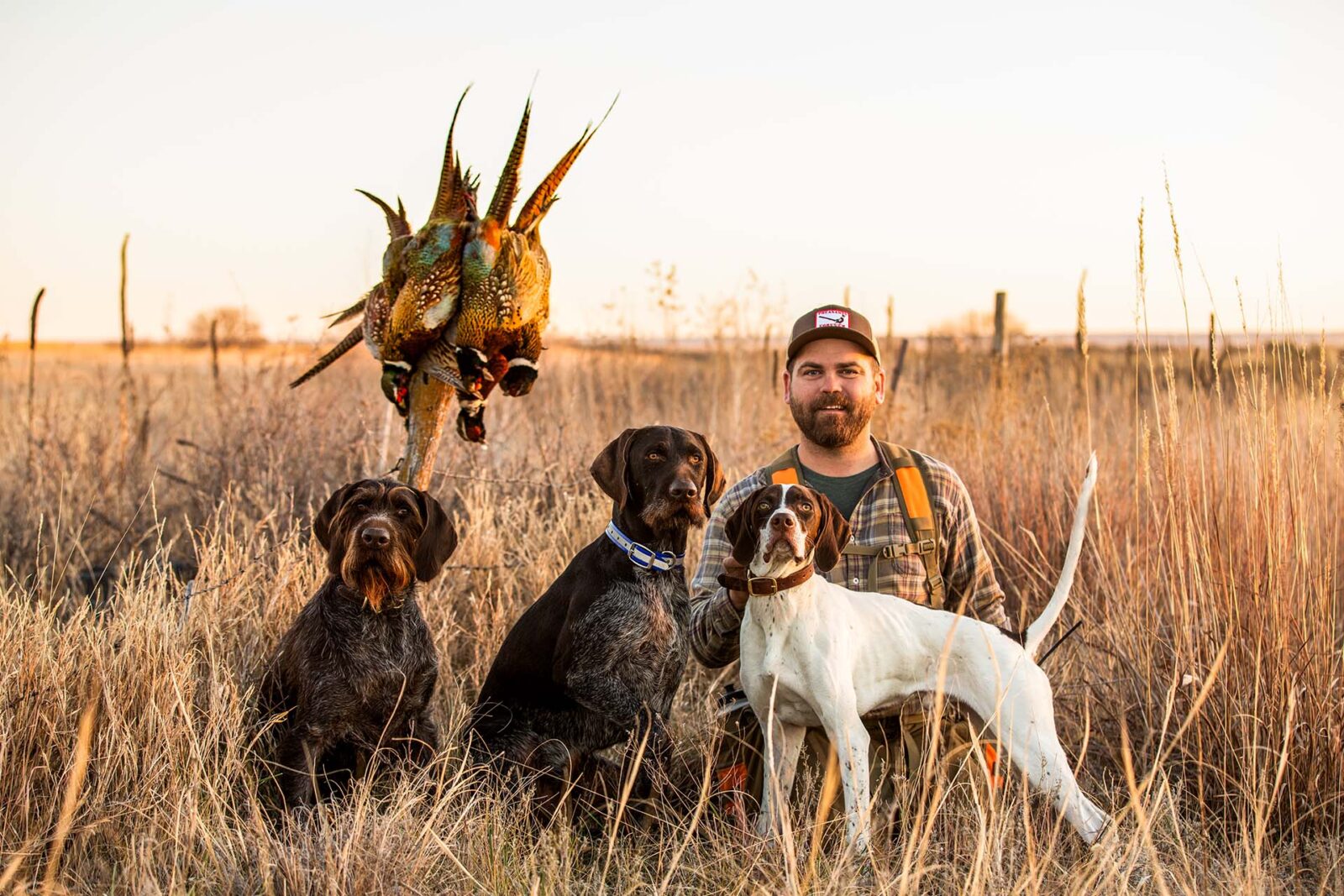
Five Dogs and a Home
Now, Ben juggles five dogs at home, in addition to a family and a bustling career. His eclectic pack of five ranges from young English Setter Fred to thirteen-year-old Lily, who “holds the fort down” while Ben is on the road. In Ben’s own words, here are his five teammates:
- Annie is the matriarch, as we’re closing in on a decade together. She is a Deutsch Drahthaar, and pretty much rules the roost. The queen of comfort, she lives a pretty plush life nowadays. Three years ago, she had a spinal stroke and lost about 70% of the use in her rear leg, so I now reserve her for short bird hunts. Really her bread and butter is waterfowling; I don’t think there is anywhere on earth she’d rather be than in the duck blind.
- Then you get to ol’ Herb, who is the goofiest, badass dog I own. In my best Minnesotan accent, “He’s just a super nice guy.” In the same breath, Herb has so much prey drive he can really just be an a-hole sometimes. At six years old, he has roosters figured out. If somebody held a gun to my head and said you need to find a rooster, Herbert would be my go-to. In addition to his love of feathers, he has a Germanic obsession with furred friends as well. Let’s just say it’s fun until it isn’t!
- Amos (Hackberry’s Amos Moses) is just a flat-out thrilling dog to watch. When I hunt with new folks for the first time, they always want to see the two-and-a-half-year-old pointer rip. He’s a big-running dog but has the ability to adapt to different environments. On the prairie, his large stature and smooth gait make him look right at home. However, in the grouse woods, he holds his own exceptionally well. Amos was the one that brought me into the field trial world, and has done an exceptional job of making me seem like a better trainer and handler than I really am. He’s had nine derby placements, including the Minnesota and Wisconsin Amateur Derby of the Year. What’s really cool for me is that he’s placed in three different types of trials: All-Age Horseback, National Bird Hunters Association, and the Cover Dog Derby stakes.
- Fred (High Point’s Snowman Fred) is my latest addition. He’s a 6-month-old Setter, and also the second in my Jerry Reed-inspired naming scheme. There is something about watching a field-bred English Setter in the grouse woods. Not only are grouse and Setters synonymous throughout history, they are simply just built for it. Fred was sired by arguably one of the most decorated cover dogs in history, Ponderosa Mac. Mac is an 8-time champion, two-time national champion, and three-time runner-up champion. I have high hopes; we’ll see how the kid does for his first season. All I know so far is that during his first bird introduction at nine weeks old, Fred slammed on point with a twelve o’clock tail and proceeded to chase the pigeon for 75 yards. I’ll take that prey drive.
- Then there’s ol’ Lily, a prized Catahoula Couch Hound. She was a rescue from Louisiana, and holds down the fort when I’m traveling. At 13 years old, Lily is hands-down the best dog I own.
It may seem like five just as easy as four, just as easy as three, but somewhere along the line, there’s bound to be a tipping point with the number of dogs in a household. Ben reflects honestly on the complications of a house full of working dogs.
“There’s honestly nothing easy with bird dogs. It’s not like a bow or rifle where you can hang it up when you’re done,” he adds. “That’s why folks that run bird dogs, or hounds which are a different breed unto their own. One dog and five dogs would be the biggest transitions in my mind. Obviously with one your lifestyle changes with the responsibility of owning a dog. Then it’s really just more mouths to feed until you reach five.”
Ben explains the math. At five, it’s imperative to have a dialed-in set-up, especially for hunters traveling with their dogs. Using normal, off-the-shelf kennels, traveling with four or five dogs is—quite simply—difficult.
“I started off running one or two kennels in the back of my truck under a topper,” he explains. “At the time I had a short bed truck, and by the time I had three dogs, the bed of my truck was essentially full of kennels which left little room for gear. Finally, when I added Fred to the mix, I had to go to a dog topper with eight holes in order to fit all the pups and still maintain organization and a sense of sanity!
With five dogs, you just have a lot of….biomass. Four or five is the point where if you’re taking a non-dog trip it’s hard to just send them to one person to watch for a long weekend. The last trip I took resulted in having dogs spread between three different locations.”
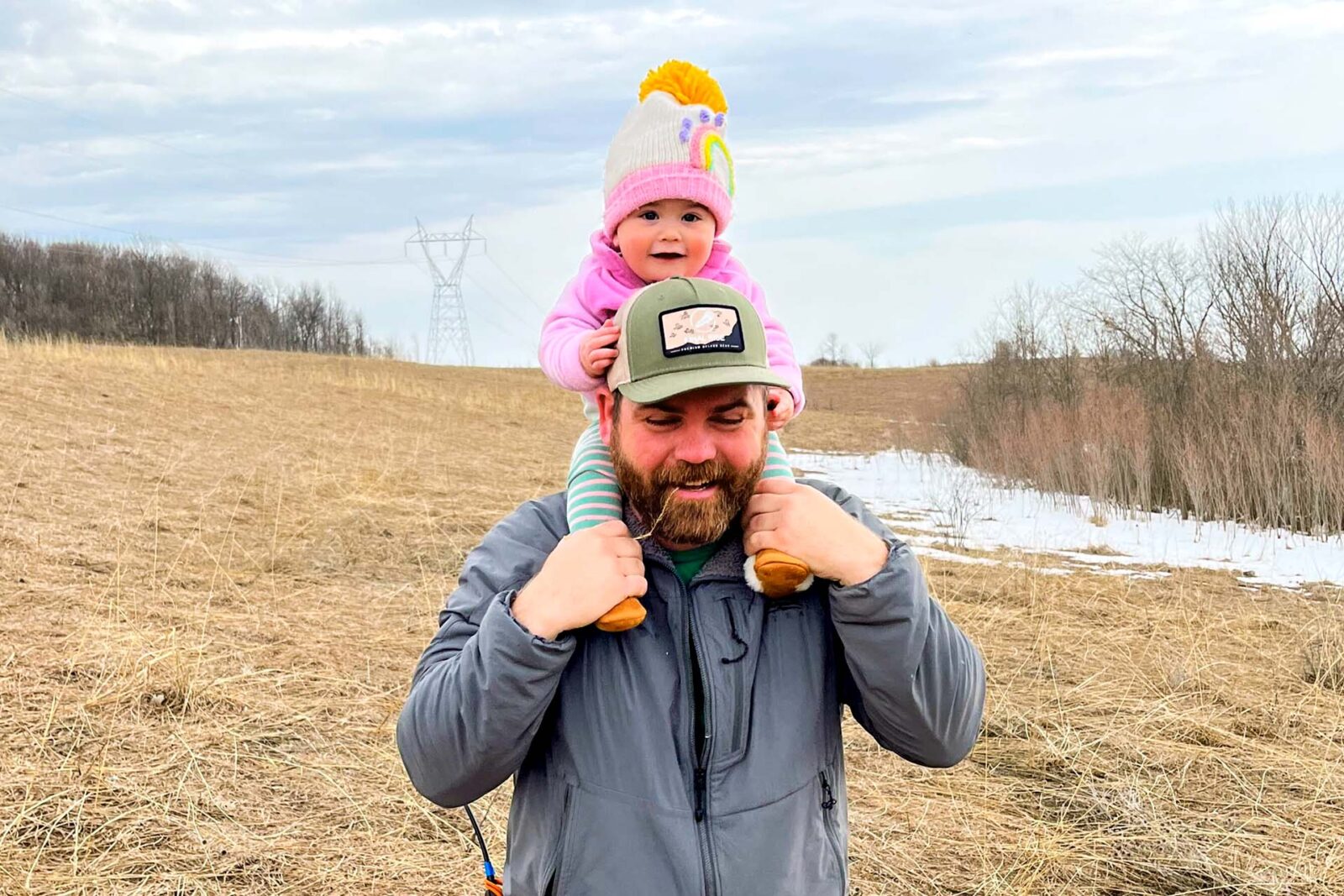
Balancing a Family With the Pack
Ben juggles the pack of five along with a busy home life. He and his wife Sara have a one-year-old daughter, Bridget, who has presented a new set of adventures. He notes that now, with a daughter, time becomes all the more precious. When someone asks if he has acreage and a grand, dialed-in kennel set-up, he reminds them he doesn’t. But his wife understands that this—the dogs and the hunting—are what make him tick. And so they make it work.
“Everyone says, ‘I’m just too busy to do this or that,’ and the truth is we make time for what is important,” he points out. “I always said I was so busy but the truth is everything is relative. It’s still important for me to get out and work dogs multiple times a week while being a present father. What I’ve realized is that you just need to cut out things that are time sucks, whether it be doom-scrolling on social media, TV, or whatever takes a lot of valuable time. Sleep, that’s another thing. While important, you can always trade it for productivity time!”
For Ben, it’s an amazing experience to see Bridget continue to grow and to really start to take a liking to the dogs. She loves to crawl all over them, and he reports that for the most part, they’re “amazing” with her. She refers to the dogs as “Ahhs”, which was something they recently discovered. The foundation of this naming scheme is when dogs are in the way or getting into trouble, Sara would say “ahh,” as in, “cut it out.”
“I don’t know if she’ll grow up to like hunting, but I’ll certainly give her the opportunity,” he notes. “My goal is to give her positive outdoor experiences growing up and if she takes interest, then I’ll nurture it. Right now, the dogs, outdoors, and hunting are just a part of life. It’s what we do, so she’s certainly immersed in it. “
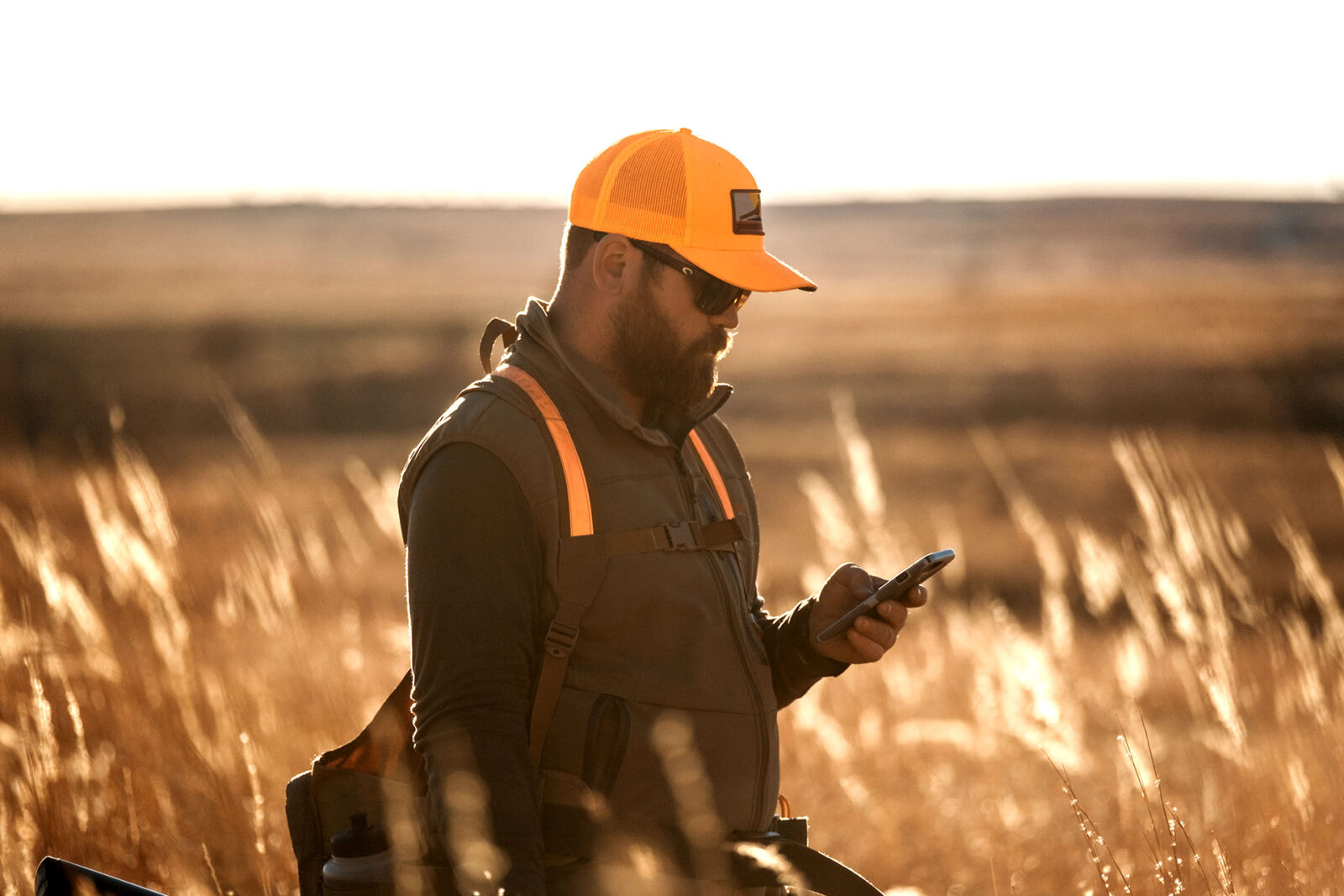
onX Life
Immersion into hunting life is not a new idea for Brettingen. At onX, he works as the Wingshooting Manager, and works with upland and waterfowl ambassadors, as well as conservation organizations such as Pheasants Forever, Quail Forever, and Ruffed Grouse Society. He also represents waterfowl and upland customers and helps ensure they have the best tools available for their pursuit.
“I’m not trying to stroke some corporate ego with this statement, but the reason I came to onX was pretty cut-and-dried. In my tenure in the outdoor industry, I’ve never seen or used a product that has changed the game so drastically,” he comments. “I couldn’t make half the trips I do today or be even close to as successful without the Hunt App. I wanted to bring my skills and experience, and to be a part of crafting such an incredible product. My bird hunting and waterfowling passions really aligned well with my role at onX.”
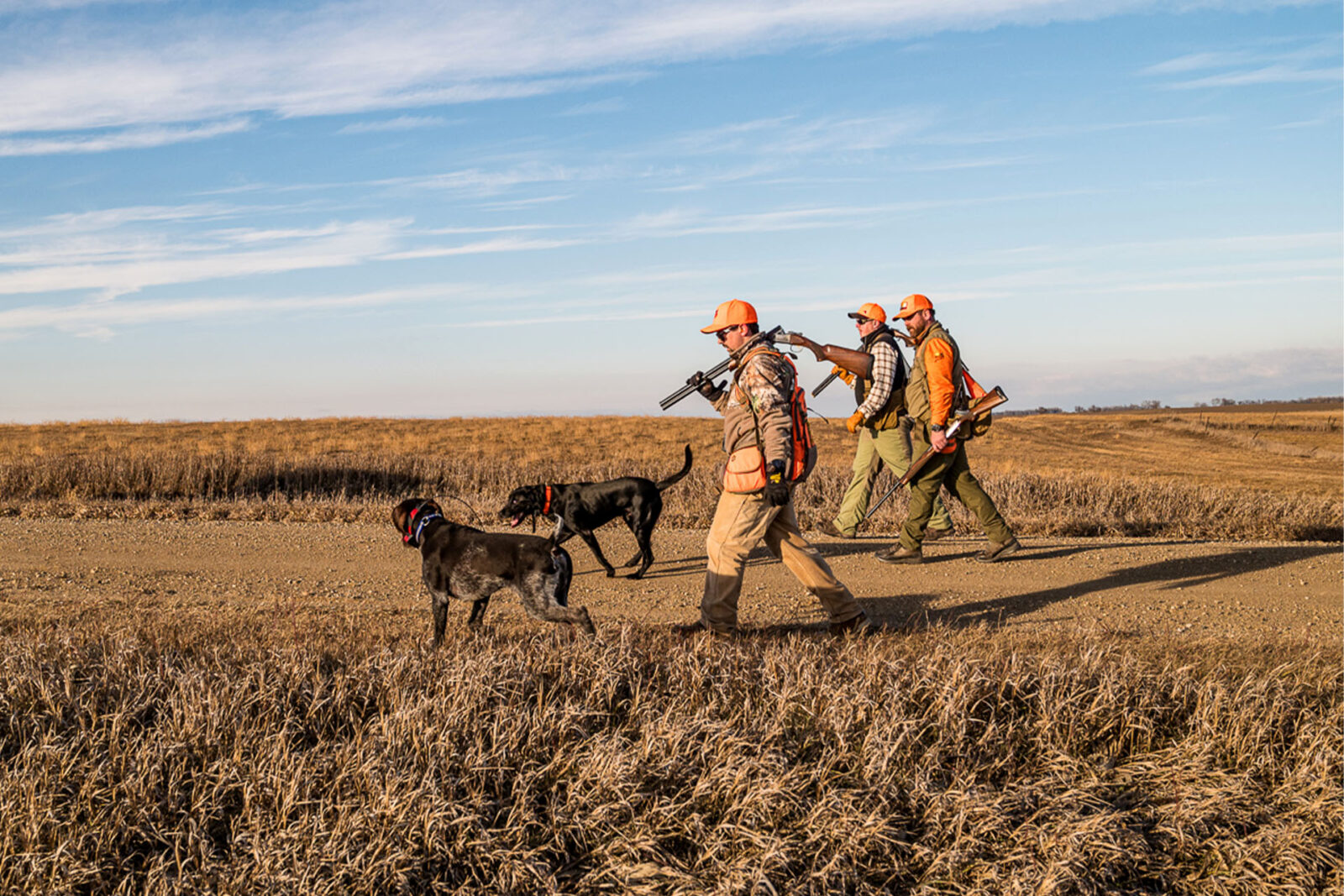
Changes in the Upland World
It’s no secret to any of us that the hunting industry is changing. We’re in a fascinating time for hunters: public land, private land management, the use of technology, weapons regulations, and so many more “hot topics” make the headlines daily. And, as with most rapidly evolving industries, there are good and bad elements to the changing tides.
“The popularity of upland bird hunting has dramatically increased, and while many aren’t thrilled with the increased pressure, I absolutely love it,” Ben opines. “When a lot of people think about upland hunting a stuffy tweed-clad gentleman comes to mind, and that’s really not true. A community of bird hunters has really formed in recent years, with a majority of people being in their mid-20s to early 40s.”
He adds that he’s seen this younger cadre come together across the country to support each other. From raising money to help a fellow bird hunter with an injured dog, coming together and raising money to open up more access, or opening up their homes and fields to wayward travelers, it’s clear the community has strong foundations and continues to grow.
“The future for the industry is pretty bright but that doesn’t mean it’s without challenges,” he adds. “There’s some pretty frightening things happening with hunting dogs across the world, including bear hunting with hounds being banned, some of the e-collar restrictions taking place in Europe, and vague and overbearing animal welfare laws. However, the largest is habitat. Don’t get me wrong, I love access, but habitat is the real concerning factor. Because it doesn’t matter how much land we can access if there aren’t birds inhabiting it. In the past decade alone, we’ve lost an estimated 53 million acres of grassland habitat in the Great Plains Region. So I urge folks reading to not just join Pheasants and Quail Forever, or Ruffed Grouse and American Woodcock Society, but to be active members, and support them however you can.”
For those looking to get into upland hunting, Brettingen advises getting involved with a dog group.
“Whether that’s your local Pheasants or Quail Forever chapter, or a dog training organization such as North American Versatile Hunting Dog Association (NAVHDA), or a field trial group. Folks are so much more likely to help and support you getting to know them through these angles. Cold calling or reaching out on social media is much more difficult with limited results, where these people will be more than happy to help in this in-person setting.”
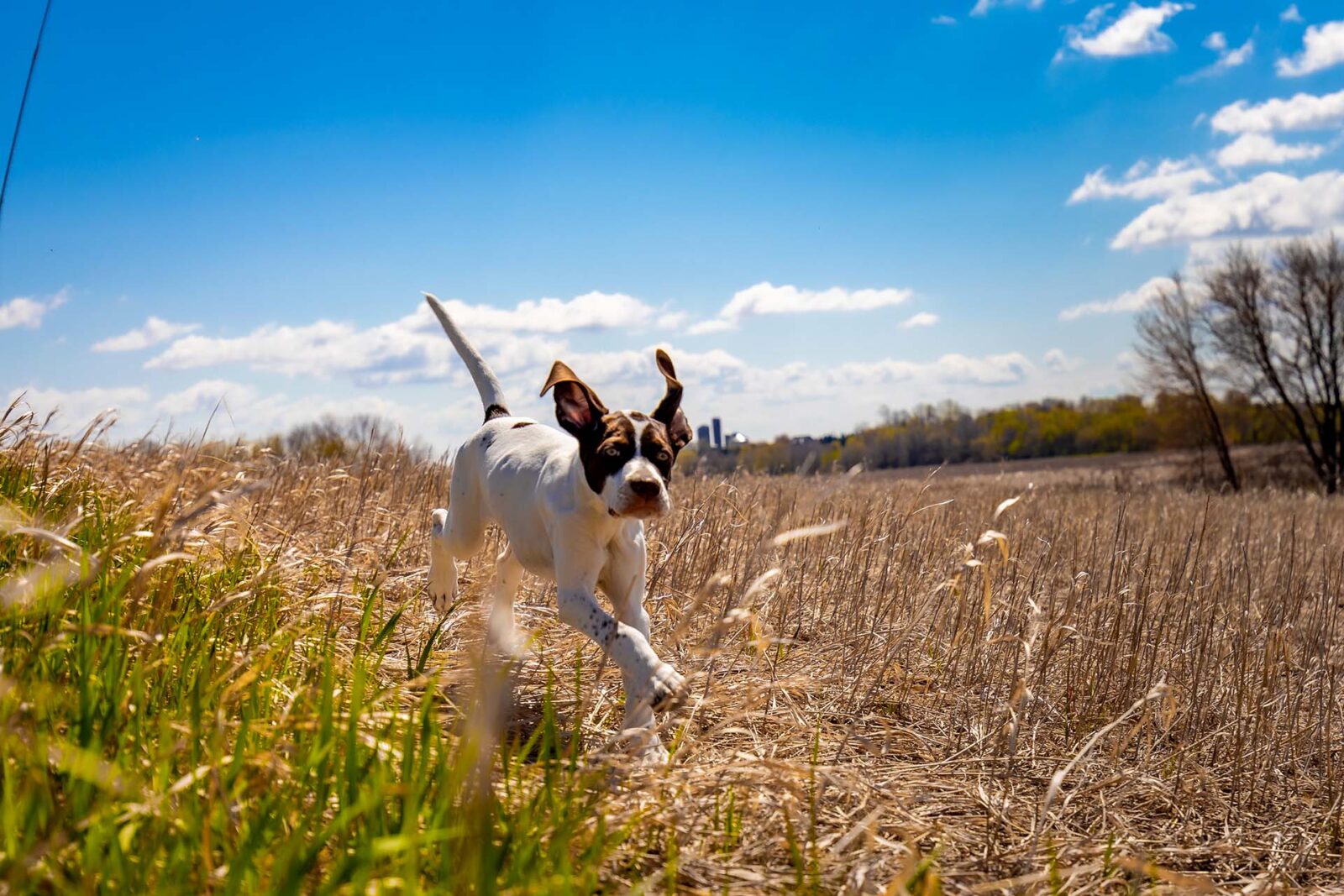
Advice for Starting Your First Bird Dog
For those looking to start shopping for their first bird dog, Brettingen offers a wealth of advice. First, don’t do your research on the internet.
“There are so many people I see who are hell bent on getting a specific type of bird dog based on how people talk about their dog on social media and the internet,” he cautions. “The problem is everyone loves their dogs, and loves to brag about them. The truth is, a lot of these people have maybe only seen a few other breeds of dog, and don’t know what a good dog actually is. To be honest, I was one of those people who kind of drank the Kool-Aid for a while. It wasn’t until I started traveling more extensively, and hunting with other people that my eyes were truly open to what a “good bird dog” truly is.”
Next, go out and actually talk to other bird dog owners in person. Watch their dogs work. Remember to take everything they say with a (large) grain of salt—and Ben notes that if they say nothing but good things about their dog, then disregard everything they say. It’s important to find somebody who is willing to talk about their dogs’ faults in addition to the positive aspects. Field trials and (to an extent) NAVHDA are great places to watch dogs, and he notes he personally is biased toward field trials—especially wild bird trials—because you’re watching the cream of the crop competing against each other.
“P.S. I just have to say this,” he adds. “Don’t feel the need to be different or unique when picking out a breed. If you want a true specialist bird dog, in my opinion, there are only about four you actually need: Pointers, English Setters, Brittanys, and German Shorthaired Pointers. If you want to talk about versatility then that opens the door for a lot more breeds, but I can promise you as a whole, one of these dogs is going to outcompete some obscure breed.”
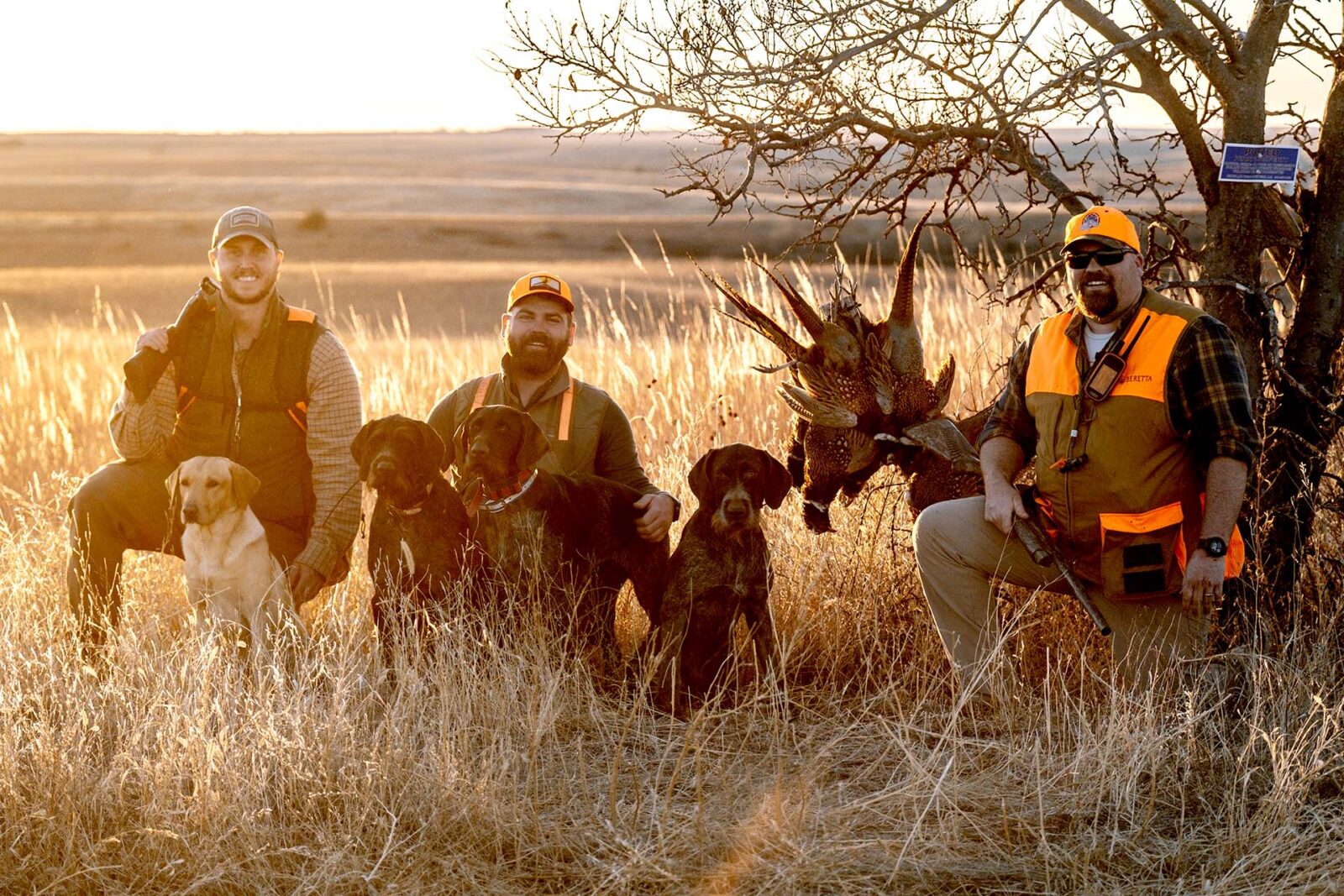
What Makes a Memorable Hunt—And the Things That Matter
When asked, it’s difficult for Brettingen to pinpoint his favorite hunt to date.
“There’s so many that stick out in my mind for different reasons. For me, the actual hunting is only a small part of the equation. There are so many hunts that I would consider to be world-class in terms of bird numbers, and they tend to blend together. There are two parts that trip my trigger: good dog work and the camaraderie. Chukar hunting for the first time really sticks out in my memory; watching Amos roll along the cliff edges at six, seven, even eight-hundred yards was a sight seared into my memory. He finally figured out those red-legged bastards, but I also will remember the three coveys he blew up first!”
As for many hunters, Ben also notes that the right people help make a trip memorable or special.
“There have been some Kansas bird hunting trips with my Southern brethren where if you could die from laughing it would have happened. At some point in my journeys, I ran across a kindred spirit or two that have become my absolute best friends. Guys I talk to almost every single day. People I never would have met if it wasn’t for a bird dog.”
Lastly, We’d Be Remiss to Not Talk Field Snacks…
Hang around the onX office for a day, and you’re likely to hear a lot of hunting stories, but also a fair bit of chatter about who is bringing what snacks to the range or the blind. We all know heading into the field well-stocked is key to a good day, and so we had to ask Ben what his go-to snacks are for a long day chasing birds.
“One of my favorite things to bring along on a trip is a sleeve of Ritz crackers and rillettes made with pheasant legs. It’s essentially a French potted meat, and a good friend of mine from Germany introduced me to it,” he explains. “I mean, you’re essentially combining pheasant, a copious amount of duck fat, salt, and Cognac. What’s there not to like? Well, in addition to fancy French meat, I’m not picky. For almost my entire professional career, I’ve been a road warrior putting 30 to 60,000 miles on a truck each year in search of birds, fish, and big game. So over the years, I’ve become a bit of a convenience store connoisseur. Nothing is better than finding a gas station that makes homemade food. Dakota Food and Fuel in Platte, South Dakota, is probably the best gas station food I’ve ever had. I’m a complete sucker for bad gas station hamburgers.”
